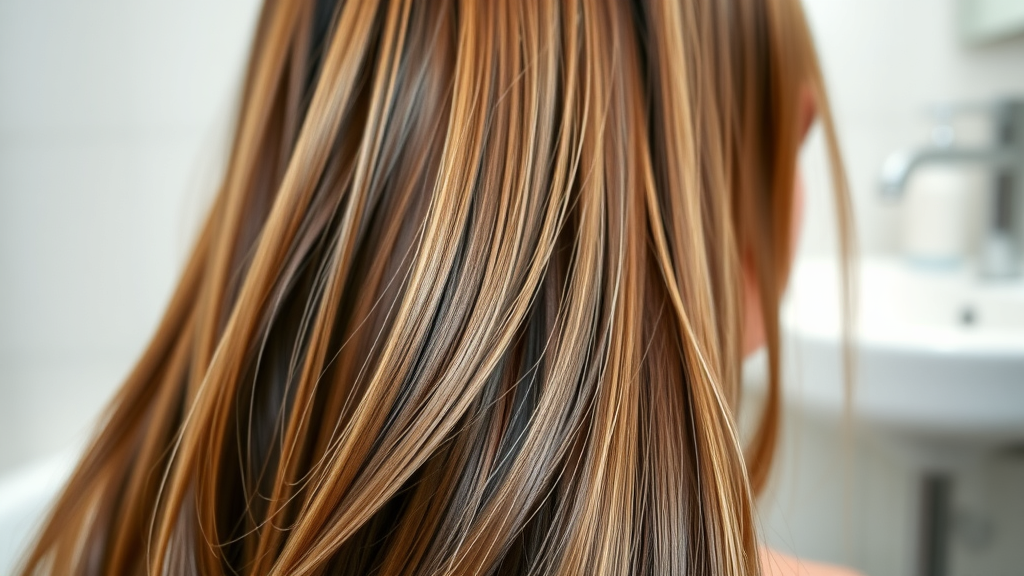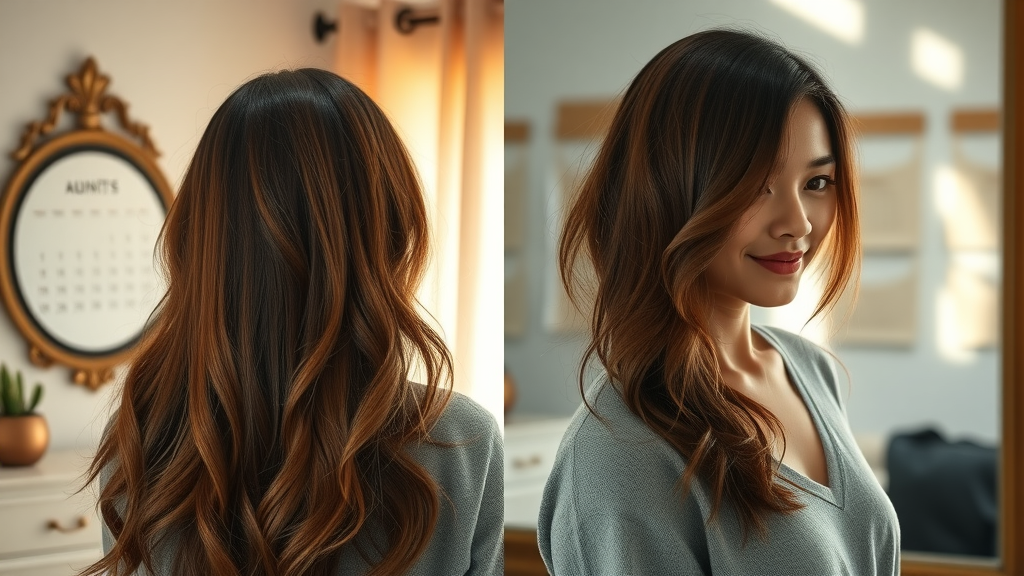Did you know that the average person loses up to 100 hairs every single day? This might sound alarming at first, but what’s truly shocking is how daily habits can determine whether your hair health thrives or suffers. If you’re searching for easy, science-backed routines to keep your hair healthy , you’ve come to the right place.
In this guide, you’ll discover the most effective ways to support healthy hair —from gentle cleansing to nutrition, the smartest styling habits, and even special care for wet hair or preventing hair loss . Explore expert advice, actionable tips, and realistic strategies for every hair type so you can unlock your hair’s natural strength and shine every day.
Shocking Stats: Why It’s Crucial to Keep Your Hair Healthy
Experts estimate that the average person loses up to 100 hairs daily, but daily habits can dramatically influence whether your mane thrives or suffers.
Our hair strands are incredibly resilient, but without proper care, even the healthiest hair can start to show signs of stress, damage, and loss. With modern lifestyles exposing our hair and scalp to pollution, styling tools, chemical products, and unhealthy diets, it’s easier than ever to compromise hair health . In fact, research shows that habits such as excessive heat styling, tight hairstyles, and harsh shampoos accelerate split ends , breakage, and visible thinning.
The good news is that a stunning transformation is possible with simple habit changes. Whether you want to prevent common issues like hair loss or boost overall shine and strength, understanding the science of care routines and making intentional daily choices can help you keep your hair healthy for the long haul.

Unlocking Hair Health: What Consistently Healthy Hair Looks (and Feels) Like
Spotting healthy hair isn’t just about how your strands look in the mirror—it’s about touch and resilience, too. The qualities of true hair health reflect internal wellness as much as external care. When you keep your hair healthy , you’ll notice greater elasticity, fewer split ends , natural moisture, and an overall gloss that lasts.
- Natural shine that indicates the cuticle is smooth and moisturized.
- Elasticity, allowing hair to stretch gently without snapping or breaking.
- Strong ends that don’t fray or split even after repeated styling.
- A hydrated scalp—neither too dry nor oily, supporting robust hair follicles .
Recognizing these signs can serve as your checkpoint for adjusting routines or spotting early issues. By tuning into these indicators and making proactive changes, you can keep thy hair feeling its best no matter your hair type or texture.
Daily Habits to Keep Your Hair Healthy: Top Tips Backed By Science
"Treat your hair like a delicate fabric: the gentler you are, the longer it will last." — Board-Certified Dermatologist
- Use a gentle, sulfate-free shampoo: Protects hair and scalp from stripping essential oils for vibrant hair health .
- Condition religiously: Locks in moisture, especially on the mid-lengths and ends for healthy hair .
- Limit heat styling tools: Direct heat causes breakage and dullness, lowering overall hair health .
- Dry hair with care: Gently pat wet hair using a soft cotton towel or microfiber cloth to prevent breakage.
- Detangle hair from ends upwards: Reduces stress on hair strands and avoids split ends formation.
- Sleep on silk or satin pillowcases: Minimizes friction and reduces hair loss overnight.
- Don’t tie hair too tightly: Prevents unnecessary tension that can lead to hair loss and weak strands.
- Scalp massages: Stimulate blood flow and improve the health of thy hair roots.
- Trim regularly: Eradicates split ends and keeps hair healthy-looking.
- Protect from UV exposure: Wear hats or apply UV-protective sprays to safeguard hair and scalp.
- Eat nutrient-rich foods: Boost hair health from within by incorporating protein, vitamins, and minerals.
- Avoid chemical overload: Limit harsh treatments and hair coloring sessions for long-lasting hair health .
- Stay hydrated: Hydration benefits the hair, scalp, and overall hair type resilience.
- Use the right hair products: Tailor your routine for your unique hair type and concerns.
- Deep condition or use a hair mask weekly: Provides extra nourishment for all hair types.
- Be gentle when hair is wet: Wet hair is fragile and prone to breakage.
- Alternate your hair wash frequency: Over-washing can compromise thy hair health .
- Mind your water temperature: Lukewarm showers keep your hair healthy, hot water can damage the cuticle.
- Avoid brushing hair excessively: Over-brushing can lead to split ends and increased breakage.
- Wash hairbrushes and accessories: Keep hair health optimal by reducing oil and product buildup.
- Choose styles that protect ends: Buns, braids, or twist-outs decrease environmental stress.
- Monitor for hair loss: Stay proactive in addressing unusual shedding or changes in your routine.

Customize Your Hair Care Routine by Hair Type
Every hair type requires different care strategies to maintain optimal health. Understanding your unique texture—whether it’s fine, curly, oily, or dry—allows you to tailor your hair care routine and maximize benefits for healthy hair . For example, curly hair is especially prone to breakage and thrives on moisture, while fine hair needs volume-boosting products without heavy residue.
- Fine hair: Use volumizing, lightweight products to avoid weighing down hair.
- Curly hair: Moisturize often and use wide-tooth combs to prevent breakage.
- Oily hair: Embrace clarifying shampoos and refrain from heavy styling products.
- Dry or damaged hair: Deep conditioners and nourishing oils help recover healthy hair .
By adapting these habits to suit your specific hair, you give your strands the best chance at resilience and shine, no matter what challenges you face in your environment or daily styling.
| Hair Type | Care Focus | Recommended Products | Styling Tip |
|---|---|---|---|
| Fine | Boost volume; avoid heavy oils | Volumizing shampoo, lightweight conditioner | Limit product buildup for movement |
| Curly | Lock in moisture; prevent frizz | Deep conditioner, leave-in cream, wide-tooth comb | Use diffusers and air-dry when possible |
| Oily | Clarify gently; balance scalp oils | Sulfate-free clarifying shampoo, lightweight rinse | Minimize touch-up products to prevent buildup |
| Dry/Damaged | Repair, hydrate, protect ends | Repair masks, nourishing oils, sulfate-free hydrating shampoo | Trim regularly; avoid excess heat |

How Daily Choices Can Prevent Hair Loss and Split Ends for All Hair Types
Preventing hair loss and minimizing split ends begins with everyday choices. Making conscious adjustments to your care routine, product selection, and styling techniques goes a long way in protecting hair follicles and maintaining strong, healthy ends. It’s important to address these issues before they become more pronounced, especially as certain hair types are naturally more vulnerable to stress and breakage.
Avoiding Over-Manipulation to Prevent Breakage and Splits
Over-brushing, rough detangling, and repetitive tight hairstyles can all lead to structural damage in the form of split ends and snapped strands. This risk compounds when hair is fragile—after coloring, during seasonal changes, or simply due to overuse of hot tools. The best defenses against this kind of hair damage are adopting gentle handling techniques and limiting manipulation to only what is necessary for your style or wash days.
Keeping your hair healthy starts with daily awareness: always use a wide-tooth comb on wet or curly hair, start detangling from the ends upward, and adopt looser, protective styles. Reducing unnecessary friction and tension preserves hair’s natural length and minimizes harmful breakage over time.
Keys to Reducing Hair Loss: Gentle Handling and Scalp Care
Your scalp is the foundation for all hair growth . Prioritizing scalp health with regular gentle massages, minimal use of harsh chemicals, and maintaining a clean, balanced scalp environment helps keep thy hair rooted and resilient. Avoid aggressive scrubbing or using nails while shampooing, and take note of sudden fluctuations in hair loss —these may signal an underlying health issue or call for changing your regimen.
A proactive approach, such as using specialized scalp serums, gentle powders, or simply avoiding tight hats and scarves, keeps the scalp and follicles healthy. Implementing these routines early can maintain hair’s youthful appearance and slow down the effects of stress or aging on your strands.
Superfoods and Nutrition: What to Eat to Keep Your Hair Healthy
Nutrition is a major factor in supporting robust hair health . The building blocks of strong, shiny hair come from the inside out, supplying active nutrients for scalp, roots, and every strand. Foods rich in vitamins, minerals, and healthy fats not only encourage hair growth but also protect against damage, dryness, and premature shedding.
- Eggs: Rich in protein and biotin for hair health .
- Berries: Antioxidants that promote strong hair growth .
- Spinach: Loaded with iron and vitamins supporting healthy hair .
- Salmon: Omega-3 fatty acids nourish the scalp and follicles.
- Nuts and seeds: Provide vitamin E and essential fatty acids.
Incorporating these superfoods into your daily diet can transform dull, fragile strands into glossy, resilient hair. Try adding one or two from the list to your meals as a simple way to improve both your overall health and your hair at the same time.

Master Your Hair Wash Routine and Product Selection
Knowing how often to wash your hair—and what products to use—can make all the difference in achieving strong, beautiful hair. Over-washing can strip natural oils, leading to dryness or overactive oil glands, while under-washing might allow dirt and product to build up, compromising hair health . Your hair type (fine, oily, curly, or damaged) should guide the frequency and formulation of your wash day routine.
Choosing The Right Hair Products for Healthy Hair
Select hair products suited to both your hair and scalp needs. Look for sulfate-free, gentle cleansers for all hair types and targeted treatments—such as volumizing sprays for fine hair, or moisturizers for curly or dry types. If your scalp tends to be oily, clarify weekly without over-drying. For colored or processed hair, emphasize nourishing and fortifying care products to lock in strength and prevent color fade.
Building a Weekly Hair Mask Habit for All Hair Types
No matter your hair type , incorporating a weekly hair mask is a game-changer for healthy hair . Masks target deeper strands, repairing damage that daily routines might not fully address. Look for ingredients such as proteins, natural oils, and humectants tailored to your main concern—repair, volume, or moisture. Use a mask after your regular shampoo, and remember to rinse thoroughly for best results.

Protecting Wet Hair: Reduce Damage, Boost Hair Health
Wet hair is more vulnerable to stretching and breakage because its structure is softer, and the cuticle is more open. This makes post-shower care one of the most critical steps in your hair health journey. Taking extra precautions after washing not only aids in styling but also prevents premature wear and tear.
Why Wet Hair Needs Extra Care
Hair is at its weakest when wet—more prone to snapping, frizz, and split ends, particularly for those with fine or curly hair. Vigorous towel-drying, harsh brushing, or pulling hair into tight styles immediately after washing can lead to unseen breakage over time. Using microfiber towels or soft T-shirts for drying, and detangling gently with a wide-tooth comb , ensures your strands stay resilient and intact.
Practical Tips for Post-Shower Hair Care
Always start detangling from the bottom and work your way up to avoid tugging or stretching fragile areas. Apply a leave-in conditioner or lightweight serum to seal in moisture and make combing easier. If you’re styling, avoid elastics immediately after washing and allow your hair to air-dry partially to maintain structure. Incorporating these habits will help you prevent breakage, increase gloss, and maintain overall healthy hair .
People Also Ask: Essential Questions on How to Keep Your Hair Healthy
How do I keep my hair healthy naturally?
To keep your hair healthy naturally, focus on a balanced diet, gentle cleansing, minimal heat styling, natural oils or masks, and regular trims. Prioritize scalp health and avoid heavy chemicals for the most sustainable results.
How do I help my hair get healthy again?
Begin by minimizing chemical exposure, focusing on nourishing conditioners and masks, limiting heat styling, and maintaining a gentle daily care routine. Hydrate well and adopt a regular scalp massage practice to promote recovery of hair health .
What are the 4 qualities of a healthy hair?
The four primary qualities of healthy hair are elasticity, shine, moisture retention, and minimal breakage or split ends. Achieving all four demonstrates successful hair care habits and robust scalp health.
Which food is best for hair growth?
Foods rich in protein (like eggs), omega-3 fatty acids (such as salmon), iron (found in spinach), vitamin E (in nuts and seeds), and antioxidants (from berries) are best for stimulating hair growth , encouraging hair health , and supporting overall hair vitality.
Realistic Habits to Keep Your Hair Healthy Long-Term
- Schedule trims every 6-8 weeks to keep your hair healthy .
- Alternate protective hairstyles to avoid tension.
- Listen to your hair: adjust routines with seasons or lifestyle changes.
- Track progress with photos or notes—monitoring hair health improvements.
| Daily Habit | Immediate Benefit | Long-Term Result |
|---|---|---|
| Gentle shampoo & regular conditioning | Soft, manageable hair after each wash | Stronger hair, fewer split ends |
| Trims every 6-8 weeks | Neat ends, reduces visible damage | Consistent hair length, reduced breakage |
| Weekly hair masks | Enhanced moisture, immediate shine | Resilient hair resistant to damage |
| Protective hairstyles | Less day-to-day stress | Lowered risk of traction alopecia and hair loss |

Frequently Asked Questions on How to Keep Your Hair Healthy
-
Can over-brushing damage your hair health?
Yes, over-brushing can create friction, leading to split ends and breakage. Use a soft brush and limit aggressive or repetitive strokes to keep your hair healthy. -
How often should hair be washed for optimal health?
The best wash frequency depends on your hair type: oily hair may need daily washing, while dry or curly hair may thrive with washing only once or twice a week. -
Does wearing hats cause hair loss?
Wearing hats occasionally does not typically cause hair loss. However, tight hats worn daily may increase tension on follicles, especially along the hairline. -
Should hair products be changed seasonally?
Yes, changes in climate can affect your scalp and hair needs. Adjust your care products to add moisture in winter or increase protection against sun and humidity in summer.
Take Charge of Your Hair Health Today
Start implementing these daily habits to keep your hair healthy—because small changes in your routine today will transform your hair health tomorrow. Strong, luminous, and resilient hair is within your reach. Put this wisdom into practice and see the difference!
Maintaining healthy hair involves adopting daily habits that nourish and protect your strands. For instance, the American Academy of Dermatology recommends applying shampoo primarily to your scalp to cleanse away built-up products, dead skin, and excess oil, while avoiding drying out the hair lengths. ( aad.org ) Additionally, using a wide-tooth comb to gently detangle wet hair can minimize breakage and preserve hair integrity. ( rush.co.uk ) Incorporating these practices into your routine can significantly enhance your hair’s health and appearance.
 Add Row
Add Row  Add
Add 


Write A Comment